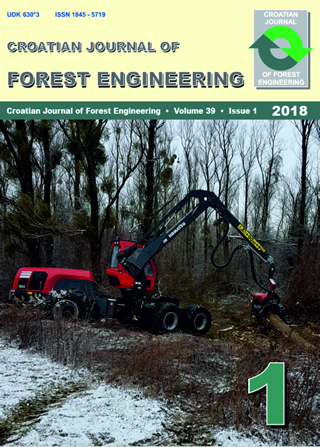Productivity and Costs of Harwarder Systems in Industrial Roundwood Thinnings
volume: 39, issue: 1
pp: 11
- Author(s):
-
- Kärhä Kalle
- Poikela Asko
- Palander Teijo
- Article category:
- Original scientific paper
- Keywords:
- harwarder, harvester-forwarder system, wood harvesting, cost-efficiency, machine relocation, follow-up study
Abstract
HTML
In several studies, the harwarder has proven to be a more cost-effective wood harvesting system
than the traditional two-machine (harvester-forwarder) system, especially when the average
stem size of the marked stand is relatively small, the removals per hectare/stand low (i.e. the
harvesting site small), and the forwarding distance short. One of the strengths of a harwarder
is considered to be the lower relocation costs compared to the two-machine system. The time
consumption of harwarder relocations have not, however, been reported in the previous harwarder
studies. Metsäteho Oy conducted a follow-up study of harwarders in industrial roundwood
harvesting, and also investigated the relocations of harwarders. A total of five – three
Ponsse Wisent Dual and two Valmet 801 Combi – harwarders were examined in the follow-up
study. The amount of harvested industrial roundwood in the study totalled nearly 30,000 m3.
The cost calculations showed that the harwarder system is more competitive than the twomachine
system when the average stem size of the marked stand is relatively low, i.e. less than
110–170 dm3. Furthermore, harwarders were the most competitive at low-removal harvesting
sites. The proportion of the total working time of harwarders used in relocations between harvesting
sites was 2.5%, and the effective relocation time was, on the average, 1.3 hours/relocation.
The study results underlined that it makes sense to harvest relatively small-removal and
small-diameter thinning stands marked for harvesting with a harwarder while, conversely, it
is more worthwhile to harvest sites with larger removals and trees using a two-machine harvester-
forwarder system, thereby raising the profitability of forest machine business.

